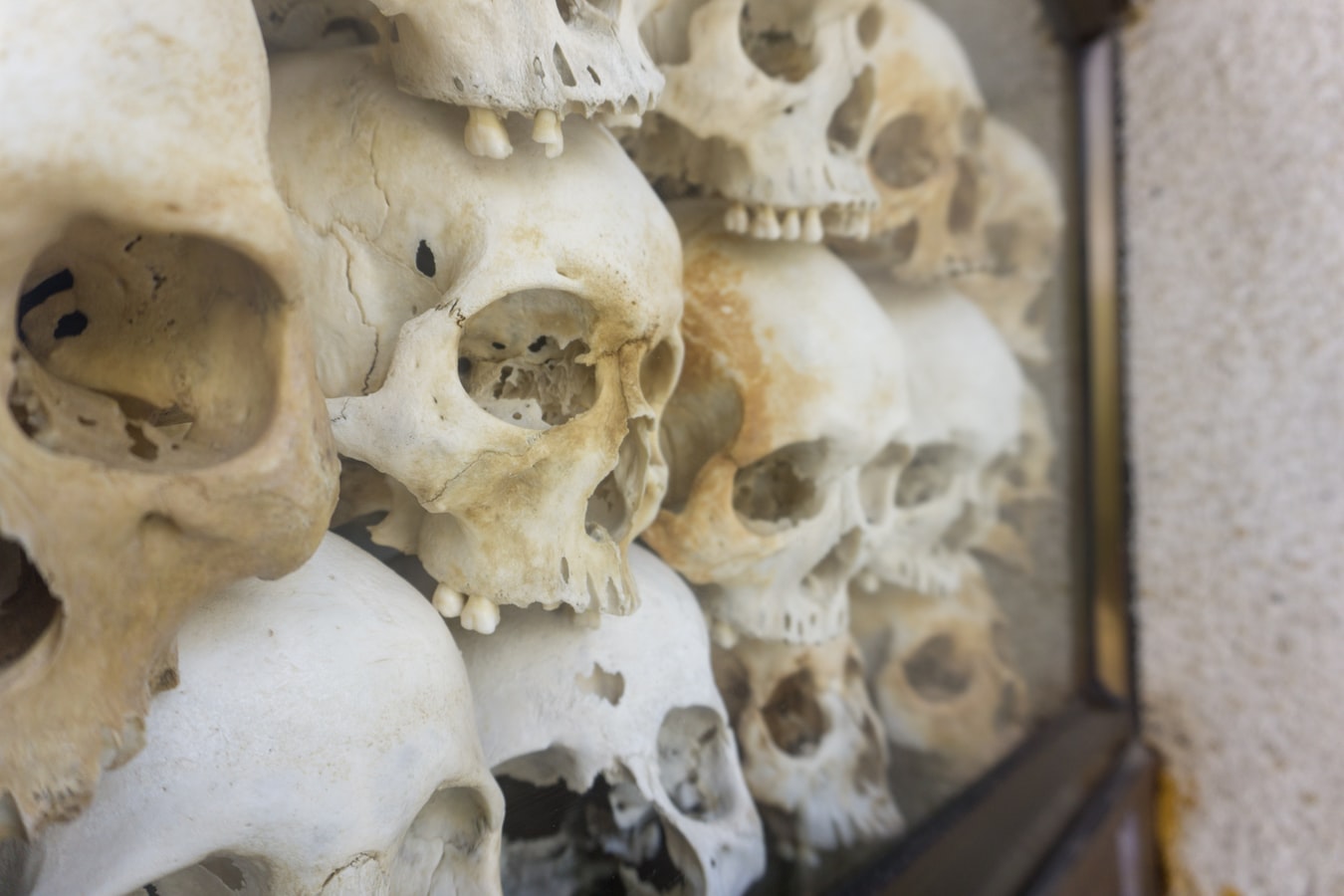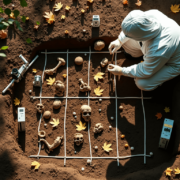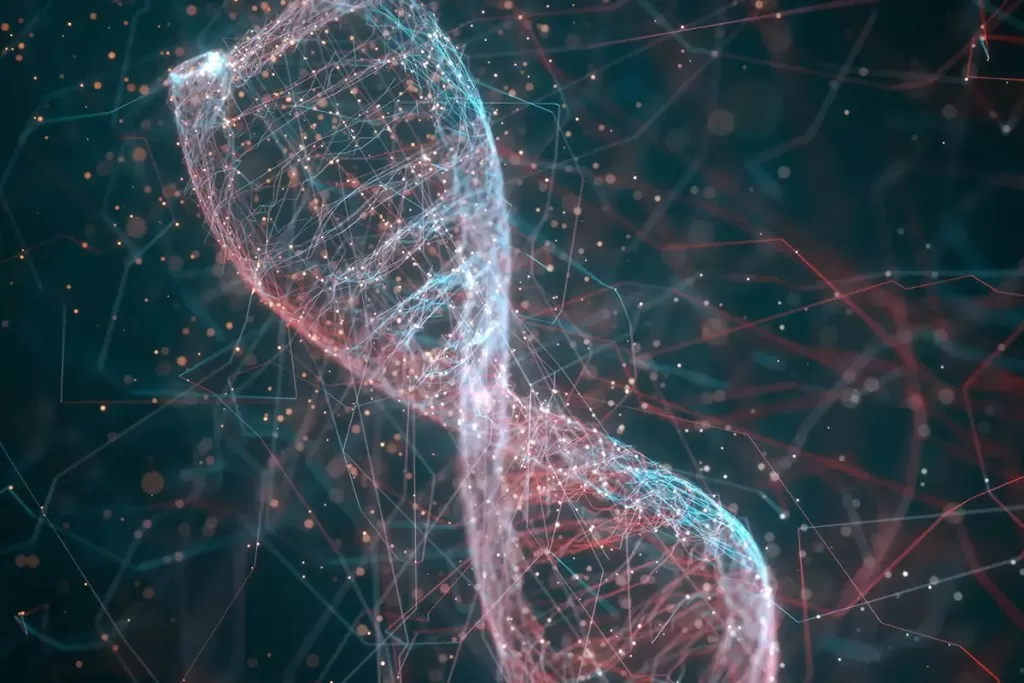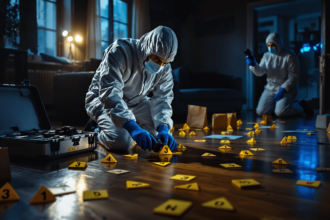Pathology and taphonomy are two sides of the same coin in forensic science
To accurately assess a cause of death, a taphonomist or forensic paleontologist must be able to decipher which skeletal manifestations happened prior to death (perimortem trauma) and which occurred after death (postmortem changes). This distinction is crucial in forensic taphonomyForensic taphonomy is the study of what happens to a body between death and recovery. Read Full Definition, as it helps determine the time since death and understand the taphonomic processes that have affected the remains.
For instance, a bone broken by a growing tree root will have vastly different implications than a bone broken just before death. Forensic taphonomy studies focus on various taphonomic processes that result in bone modification and soft tissue decomposition. Let’s explore some of these processes:
Animal Activity
Carnivores and rodents are generally responsible for animal scavenging, though not all animal damage is caused by carnivorous activity. Postmortem changes may also result from trampling by large-bodied animals, such as cows, deer, antelope, wild boars, and sheep. Trampling can lead to both bone modification and disarticulation of skeletal remains.

Carnivore Damage
Features commonly associated with carnivorous damage are punctures, pits, scoring, and furrows. Punctures and pits are bite marks left in the form of holes on bone. Pits tend to be more superficial and can be located on any part of the skeleton, while punctures are deeper holes usually found in areas where bone is thin or on the ends of long bones.

Rodent Damage
Scoring and furrows are scratches across the surface of bones. Scoring usually occurs in the form of parallel lines. Furrows leave deeper grooves than scoring and are generally located on the ends of bones. Rodent markings are distinguishable from carnivorous markings by the straightness of the grooves. Rodents typically gnaw on bones in order to wear down their incisors and therefore do not contribute as much damage as carnivores. Generally, rodent gnawing is seen on larger bones.
Burial Damage
Burial damage reflects the material in which remains have been buried. Along with compression and breakage, more subtle features such as root etchings and bone erosion can often be identified on recovered skeletal remains. This aspect of taphonomy, known as biostratinomy, focuses on what happens to remains between death and final burial.
Soil Erosion:
The type of soil in which an individual is buried has great effects on the preservation of remains. Burial damage is most often seen in interments in acidic soil, which result in severe erosion of cortical bone. Examination of any pitting manifestation should be undertaken with scrutiny because such features are found in some pathologies, as well as taphonomic damage.

Root Etchings:
Another type of burial damage is caused by the growth of roots underground. Bones can get in the way of growing roots and can either be broken by the pressure imposed upon the bone or scarred by the abrasive surface of bark.

Fire Damage
Fire damage is typical in forensics cases and can be characterized by three manifestations left on bone. It is possible for fire to reduce bones to ash, a process known as cremation. This process significantly affects both soft tissue decomposition and hard tissue decomposition.
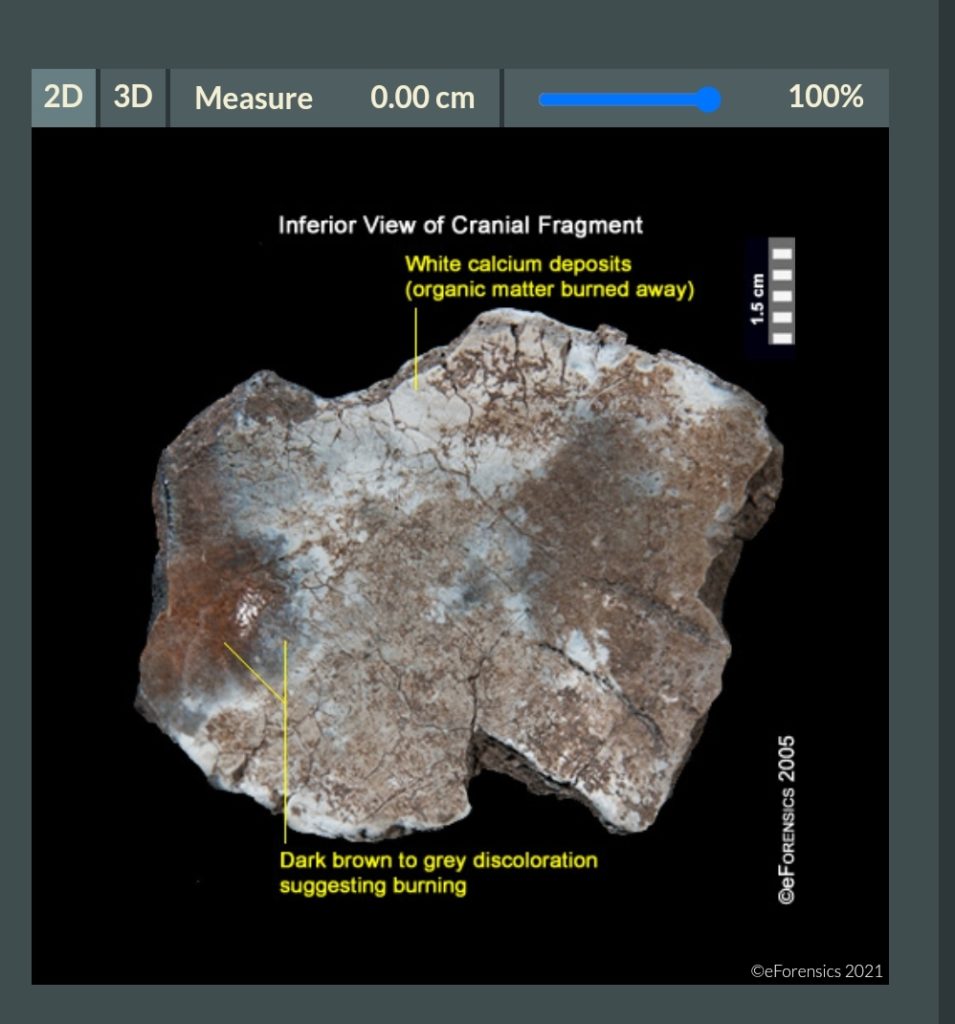
Cranial Fragment
The first characterization of fire is a change in coloration, which follows a distinct pattern. First, the bone changes from its normal color to a dark brown and subsequently black, caused by organic matter’s carbonization. Then the bone undergoes a change from dark gray to light gray, and finally to white. At this final stage, the only material left from the bone is the calcium deposits, which results in the white coloration.
The second change seen in bone when exposed to fire is warping, cracking, and overall distortion. The last change seen is shrinkage of bone due to the rapid evaporation of moisture.
Mineral Absorption
Mineral absorption occurs when an individual has been buried with a metal object. The combination of soil, water, and metal can cause bone to absorb chemicals and take on a greenish tint. This often happens with individuals who have been buried wearing jewelry or belts.
Weathering and Bone Weathering
The most damaging weathering force is sunlight. After the fleshy portion of an individual is gone, the skeleton is left without protection from the sun. The main types of damage caused by sunlight are bleaching, shrinkage, and warping.
Bleaching
Sun bleaching occurs when a bone is left on the surface of the ground or is only partially buried. Bone that is exposed to sunlight will undergo discoloration, taking on a bleached or whitened appearance.
Cracked Bone
Shrinking occurs when the moisture of bone has evaporated and bone begins to decrease in size. Oftentimes, the cortical bone (top surface of the bone), which is exposed to more sunlight, shrinks at a faster rate than the inner layers of bone. This causes tension between the layers of bone and results in cracks. Warping is caused by the differential drying rates of different segments of bone. Typically, a bone will bend to the side that has lost the most moisture.
Conclusion:
In conclusion, understanding taphonomy and its various processes is crucial for forensic anthropologists and taphonomists. By studying these postmortem changes and taphonomic processes, experts can more accurately determine the time since death, identify perimortem trauma, and reconstruct the events surrounding an individual’s death and decomposition.



